Polestar 4 removes the rear window and installs maximum relaxation
A bold design decision translates to maximum comfort for rear seat passengers in the Polestar 4. But why would any car buyer care so much about the comfort of their passengers?
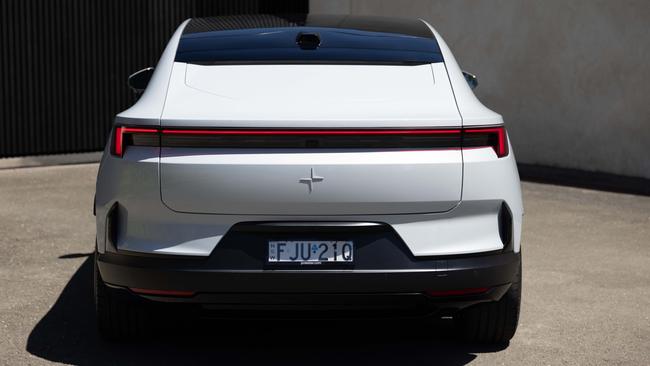
From some angles, the rear-window-less Polestar 4 looks exciting, innovative and boldly bonkers. Unfortunately, from directly behind, particularly when painted white, it looks like a lawn bowls player heading for drinks on the rinks with his trousers pulled right up under his armpits.
Fortunately you can’t see the car’s backside when you’re sitting in the rear of this wildly powerful Polestar, which is not only hugely comfortable – with loads of headroom and power-reclining seats – but made me feel like I was in a stretch limo and thus on my way to my school formal again, because that’s the only time I can recall being in a vehicle with no rear windscreen.
TOP 10 NEW EVs: FROM FAST AND FURIOUS TO DOWNRIGHT CRAZY
You might think the decision to break the glass out and replace it with a camera that feeds a digital rear-vision “mirror” was driven by the fact that Polestar is a Swedish brand and thus desperate to be different, but it’s actually a clever bit of design trickery (speaking of which, my favourite features are the “Swedish Gold” brake calipers; I’m pretty sure they mean Abba Gold).
Doing away with the rear window allows the Polestar 4’s entire rear structure to move backwards, which means you can give passengers more headroom while also offering a sleek, coupe-like roof line. Or as the company puts it: “It’s an SUV on the inside and a coupe on the outside.” (And it really is quite big, with a wheelbase of 4.8m, which is longer than the Polestar 3 SUV.)
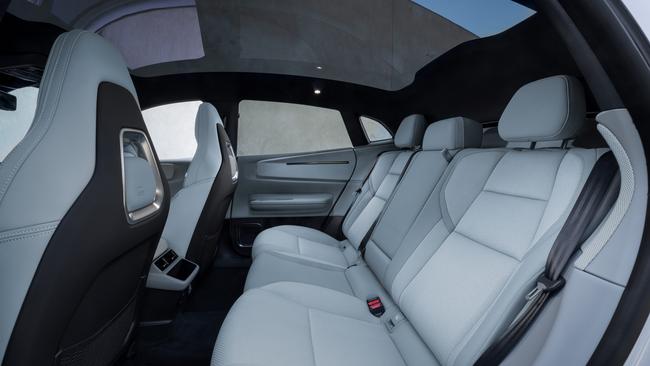
Other cars that have attempted this, like the stupendously unattractive BMW X6, feel like a punishment to sit in the back of, but the Polestar 4, with its giant glass roof, feels supremely spacious and very much like a car designed to delight rear passengers.
I pointed out to the Polestar people that I couldn’t understand why any car buyer would care so much about the comfort of their passengers, and they pointed out that I’m an only child and thus an overly selfish person.
Now, I’ll grant you that your eyes probably do get used to switching between traditional wing mirrors and the digital rear-vision camera “mirror” – which does provide a wide field of view and night vision – but what I don’t think I would ever enjoy is turning my head to reverse the car and realising I can’t see anything.
The Polestar 4 comes in two variants. The fastest Polestar ever made is a dual-motor EV that makes 400kW/686Nm and hits 100km/h in 3.8 seconds – and if this scares you (and it probably should), you can choose the single-motor Long Range version with just 200kW, 343Nm and a leisurely 7.1 second dash to 100km/h instead. To look at it another way, you can have that 200kW single-motor Long Range Polestar 4 for $78,500 or, for just $10K more, you can have literally twice as much performance in the dual-motor variant.
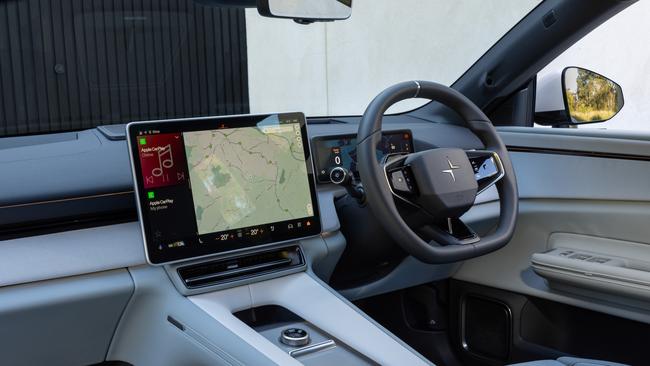
Sure, going for the full flat-out option means your claimed range will drop from 620km to 590km, but you’ll be going too fast to care, and the fact is that both those range figures are impressive. And the dual motor variant is clever enough to disengage the front motor when you’re simply cruising along a freeway, thus adding more range.
The more important trade-off is that the cheaper, less-terrifying single-motor variant has to make do with standard suspension, which can be a touch crashy. On the plus side, the single motor is on the rear axle, so it’s set up to handle like a sports car should.
Both cars feel involving and fun to drive, with steering that can be adjusted to your preferred level of meatiness, and the Long Range single-motor variant certainly doesn’t feel like a slug, even after stepping out of the maximum-madness one, which really does deliver the kind of gut-churning acceleration that allows you to pull off the rare treat of making yourself almost as carsick as your passengers.
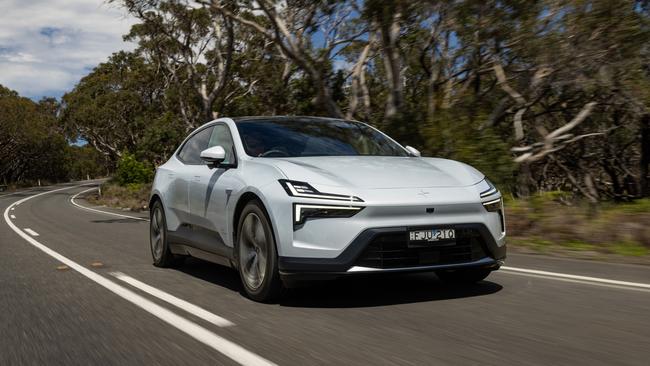
The cabin looks and feels properly premium and appropriately woke, with lots of labels telling you just how many whale tears were saved by the various materials, including something called Tailored Knit, which is made from 100 per cent recycled yarn (where does this come from, old fishermen’s jumpers?), and Tech Knit, which can radiate mood lighting. You can choose the tone and timbre of that lighting by using planet mode, which allows you to flick through snazzy graphic models of the various planets, and the Sun, via the large touchscreen. So, Mars makes everything red, Earth is a warm green and your teenager will definitely opt for Uranus (they’ve gone for blue rather than brown, fortunately).
The fact that the screen will also provide “scientific facts about the chosen planet or Sun” is, aside from being annoying to your children, a real hint to the personality of Polestar. For me, while it is partly Chinese-owned, the brand has a real Saab/Volvo/meatballs quality to it, which makes me wonder, do they play lawn bowls in Sweden?
Polestar 4 Single Motor Long Range
Engine: Permanent magnetic synchronous motor (200kW/343Nm), 100kWh battery
Transmission: One-speed automatic, rear wheel drive
Efficiency: 17.8kWh per 100km; range 620km
Price: $78,500
Rating: 3.5/5


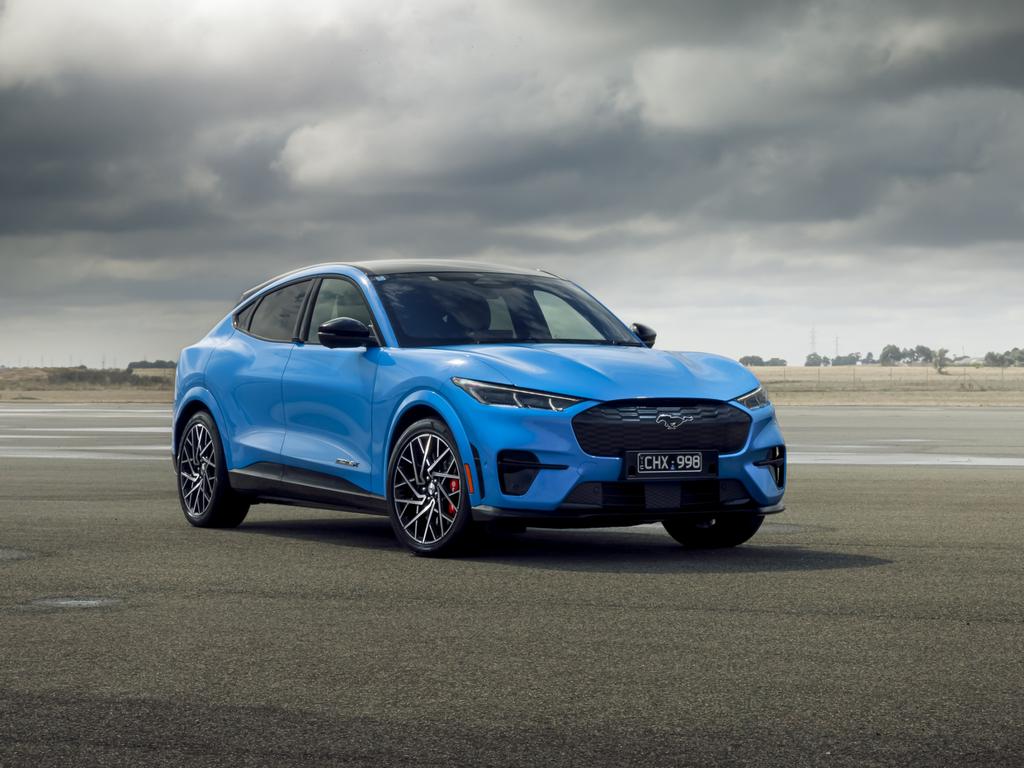

To join the conversation, please log in. Don't have an account? Register
Join the conversation, you are commenting as Logout